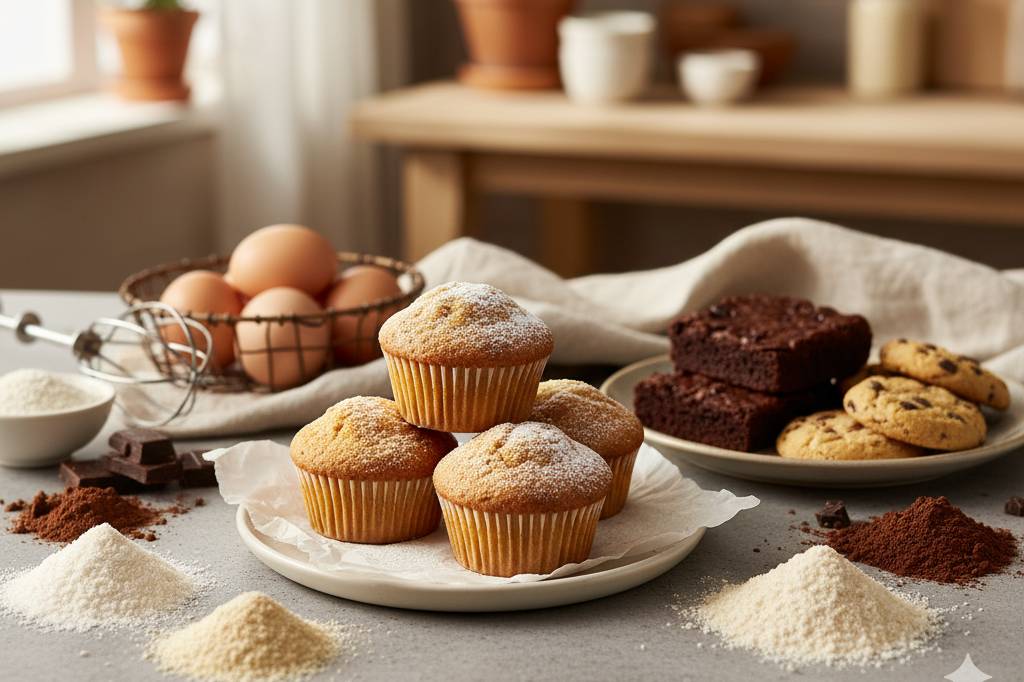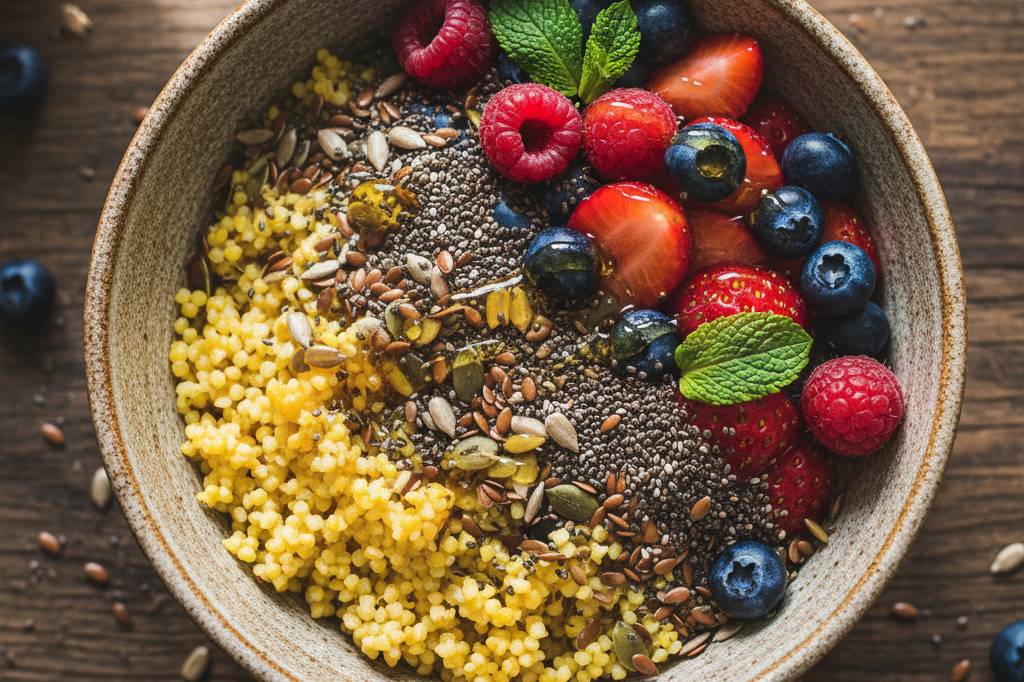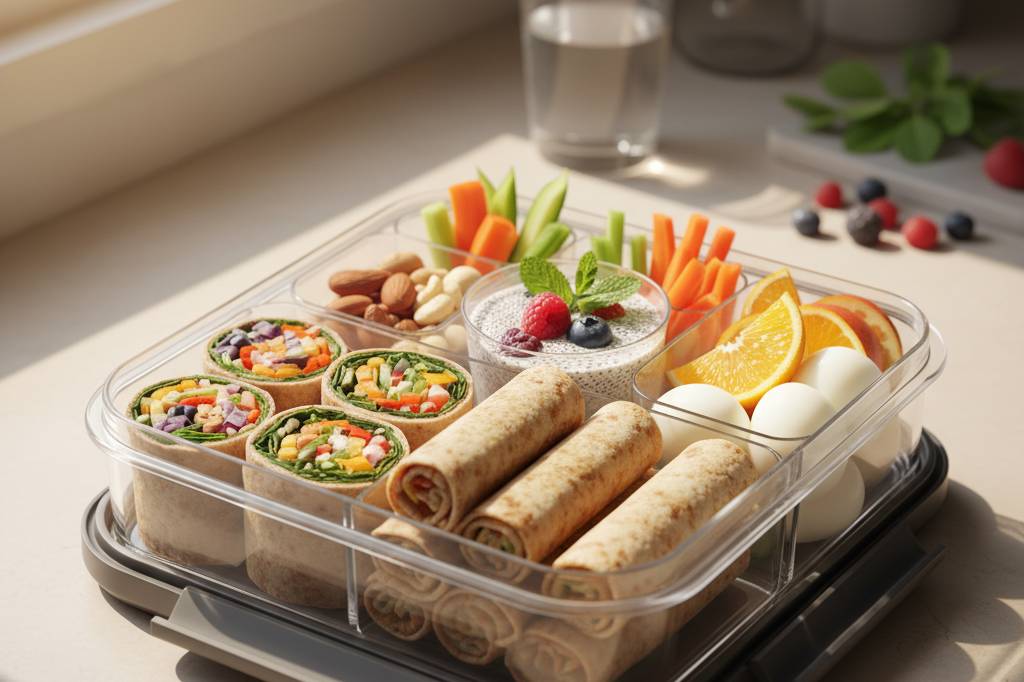Baking delicious treats doesn’t have to mean sacrificing your health or giving up gluten. With the rise of gluten-free baking, it’s now possible to enjoy muffins, brownies, and cookies that are not only tasty but also packed with nutrients. By using alternatives like quinoa flour, almond flour, and millet flour, you can create healthy desserts that are perfect for everyone—whether you’re gluten-intolerant or just aiming for a healthier lifestyle.
Gluten-free baking opens the door to a world of flavors and textures. These flours not only replace wheat but also bring their own unique nutritional benefits, making your baked goods more filling, more wholesome, and full of flavor.
Why Choose Gluten-Free Flours?
1. Quinoa Flour – Protein-Packed and Nutty
Quinoa flour is rich in protein, fiber, and essential amino acids, making it a powerful ingredient for immunity and energy. It adds a slightly nutty flavor to baked goods and provides natural structure, which is essential when you’re replacing wheat flour. Quinoa flour works well in muffins and brownies, providing a light, fluffy texture while keeping your treats healthy.
2. Almond Flour – Moisture and Richness
Almond flour is made from finely ground almonds and is high in healthy fats, vitamin E, and magnesium. It keeps baked goods moist and tender, perfect for cookies, cakes, and even gluten-free bread. Its natural sweetness often allows you to reduce added sugar, making your desserts even healthier. Almond flour also provides a delicate, buttery flavor that enhances any recipe.
3. Millet Flour – Earthy and Fiber-Rich
Millet flour is gluten-free, high in fiber, and full of minerals like iron and magnesium. Its mild, earthy flavor blends well with other flours, and it’s a fantastic option for adding bulk and nutrition to your baked treats. Millet flour also helps in sustained energy release, making your desserts not just tasty but also nourishing.
4. Other Flour Options
-
Oat Flour: Adds softness to muffins and cookies.
-
Buckwheat Flour: Works well in brownies and pancakes for a nutty flavor.
-
Coconut Flour: High in fiber, ideal for dense and moist cakes, but absorbent—use sparingly.
Tips for Successful Gluten-Free Baking
Gluten-free flours behave differently than wheat flour. Here’s how to ensure your baked goods come out perfect every time:
-
Mix Flours for Best Texture
Using a combination of flours helps replicate the structure and texture of wheat-based baked goods. For instance, 50% almond flour + 30% millet flour + 20% quinoa flour creates a balanced blend for cookies or muffins. -
Use Binding Agents
Gluten provides elasticity, so replace it with eggs, flaxseed meal, or chia seeds. Mix 1 tablespoon of flaxseed meal with 3 tablespoons of water to make a flax “egg” as a plant-based binder. -
Adjust Liquid Content
Gluten-free flours absorb liquid differently. You may need to increase milk, water, or oil slightly to achieve the right consistency. Batter should be slightly thicker than standard wheat flour batter. -
Don’t Overmix
Overmixing can make gluten-free muffins or cookies dense and tough. Mix ingredients until just combined for soft, tender results. -
Add Moisture and Flavor Enhancers
Ingredients like yogurt, applesauce, mashed bananas, or nut butters help retain moisture and improve taste. Vanilla, cinnamon, or cocoa powder can add depth of flavor to your creations.
Easy Gluten-Free Treat Ideas
Here are some simple and delicious recipes to get you started:
1. Quinoa Muffins
-
Ingredients: quinoa flour, almond flour, baking powder, eggs, honey, milk, blueberries or nuts.
-
Method: Mix dry ingredients, add wet ingredients, fold in fruits/nuts, and bake at 180°C for 20–25 minutes.
-
Result: Fluffy, protein-packed muffins perfect for breakfast or snacks.
2. Almond Flour Brownies
-
Ingredients: almond flour, cocoa powder, eggs, coconut sugar, melted dark chocolate.
-
Method: Mix ingredients, pour into a greased pan, bake for 25–30 minutes.
-
Result: Fudgy, rich brownies without gluten, full of chocolate goodness.
3. Millet Cookies
-
Ingredients: millet flour, almond flour, coconut oil, honey, baking soda, chocolate chips or dried fruits.
-
Method: Mix dry and wet ingredients separately, combine, drop spoonfuls onto a baking sheet, bake for 12–15 minutes.
-
Result: Crispy on the outside, soft on the inside cookies that are both healthy and indulgent.
4. Gluten-Free Banana Bread
-
Use quinoa, almond, and millet flour blend with ripe bananas, eggs, and a touch of honey. Bake for 45–50 minutes at 175°C.
-
Result: Moist, naturally sweet bread that’s perfect for breakfast or tea time.
Substitutions for Wheat Flour
-
Quinoa Flour: Ideal for muffins and brownies; adds protein and a slightly nutty flavor.
-
Almond Flour: Adds moisture and richness; perfect for cookies and soft cakes.
-
Millet Flour: Provides fiber and a subtle earthy taste; balances other flours.
-
Oat Flour (optional): Great for soft cookies, muffins, or pancakes.
By experimenting with these flours and ratios, you can create a variety of gluten-free recipes that taste as good as traditional baked goods—sometimes even better!
Final Thoughts
Gluten-free baking doesn’t have to be complicated or compromise taste. With quinoa, almond, and millet flours, you can make healthy desserts that are moist, flavorful, and packed with nutrients. From muffins to brownies and cookies, these recipes prove that gluten-free doesn’t mean taste-free.
Start small with simple recipes, experiment with flour blends, and soon you’ll have a repertoire of delicious, wholesome baked treats that everyone can enjoy. Baking gluten-free can be both fun and rewarding, allowing you to indulge in sweets while maintaining a healthy lifestyle.




Leave a comment
This site is protected by hCaptcha and the hCaptcha Privacy Policy and Terms of Service apply.